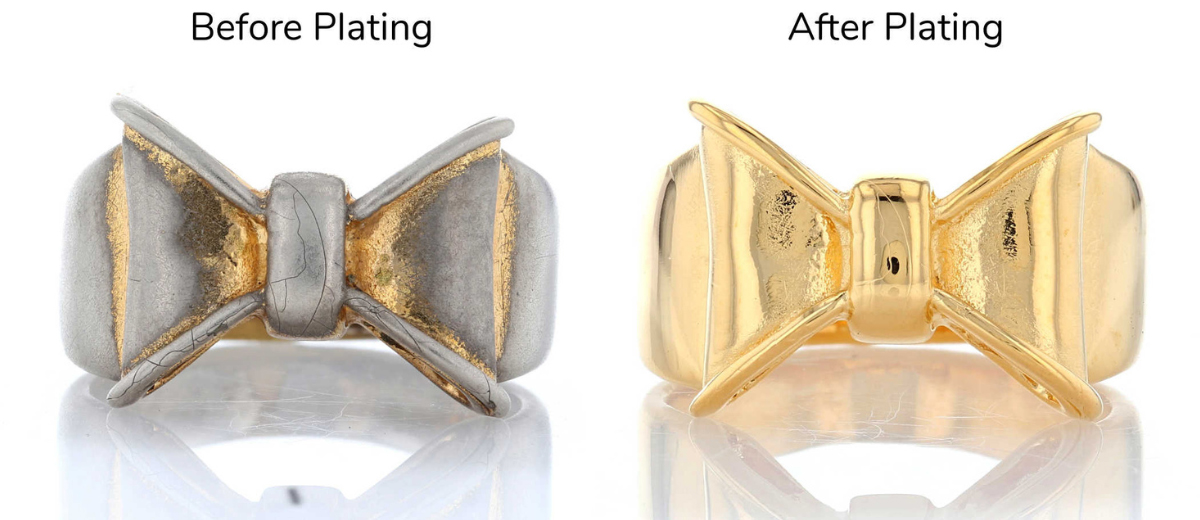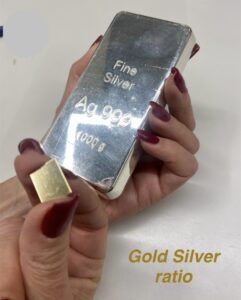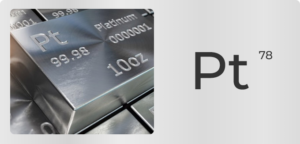Salts of Silver and Gold
Salt, in the context of precious metals, refers to a compound formed between a metal and a non-metal. Gold and silver salts are commonly used in plating solutions as they are highly soluble in water and can be easily dissolved to form a plating solution.
Gold potassium cyanide and silver nitrate are two examples of such salts that are used in plating solutions.
Gold potassium cyanide (GPC) is a complex salt that is used in the electroplating of gold onto metal surfaces. It is typically prepared by combining potassium cyanide with gold in the presence of oxygen. The resulting solution is highly toxic and should be handled with extreme care. GPC is an important compound in the manufacturing of jewelry, electronic components, and decorative objects.
Silver nitrate is a highly soluble salt that is used in the electroplating of silver onto metal surfaces. It is prepared by dissolving silver in nitric acid and is commonly used in the production of mirrors, tableware, and other decorative objects. Like GPC, silver nitrate is also highly toxic and should be handled with caution.
In summary, gold and silver salts are commonly used in plating solutions due to their high solubility and ability to easily dissolve in water. These salts are important in the manufacturing of a variety of products, including jewelry, electronic components, and decorative objects. However, due to their toxic nature, it is important that they are handled with care and only by trained professionals in controlled settings.

What are the benefits of using gold and silver salts in plating solutions?
The use of gold and silver salts in plating solutions offers several benefits, including:
- Corrosion Resistance: Both gold and silver are highly resistant to corrosion, making them ideal for use in plating solutions. By electroplating a metal surface with gold or silver, it can become much more resistant to corrosion and oxidation, increasing its lifespan and durability.
- Decorative Appearance: Gold and silver are highly valued for their lustrous appearance and can add a decorative finish to a variety of surfaces. By electroplating a metal surface with gold or silver, it can be transformed into an attractive, high-quality decorative object.
- Conductivity: Gold and silver are highly conductive metals and are commonly used in the production of electronic components. By electroplating electronic components with gold or silver, their conductivity can be improved, leading to improved performance and reliability.
- Chemical Stability: Gold and silver are highly stable metals that are resistant to most chemicals. By electroplating a metal surface with gold or silver, it can become more resistant to chemical reactions, making it suitable for use in harsh environments.
Overall, the use of gold and silver salts in plating solutions provides a range of benefits, including improved corrosion resistance, decorative appearance, improved conductivity, and chemical stability. These benefits make them highly valuable in a variety of industries, including jewelry manufacturing, electronics production, and decorative object production.
What are the different types of gold salts used in plating?
There are several types of gold salts that are commonly used in plating solutions, each with its own unique properties and applications. Some of the most common types of gold salts used in plating include:
- Gold potassium cyanide (GPC): GPC is a highly toxic salt that is commonly used in the electroplating of gold onto metal surfaces. It is formed by combining potassium cyanide with gold in the presence of oxygen.
- Gold sulfite: Gold sulfite is a water-soluble salt that is used in the production of gold plating baths. It is formed by dissolving gold in sulfurous acid and is commonly used in the electroplating of gold onto metal surfaces.
- Gold chloride: Gold chloride is a yellowish-green salt that is used in the production of gold plating baths. It is formed by dissolving gold in hydrochloric acid and is commonly used in the electroplating of gold onto metal surfaces.
- Gold sulfide: Gold sulfide is a black solid that is used in the production of gold plating baths. It is formed by reacting gold with hydrogen sulfide and is commonly used in the electroplating of gold onto metal surfaces.
- Gold cyanide: Gold cyanide is a complex salt that is commonly used in the production of gold plating baths. It is formed by reacting gold with potassium cyanide and is commonly used in the electroplating of gold onto metal surfaces.
Each type of gold salt has its own unique properties and benefits, and the choice of which salt to use will depend on the specific application and desired results. It is important to note that gold salts can be hazardous and should only be handled by trained professionals in controlled settings.
What is the process of devolving gold salt in water or other solvent?
The process of dissolving gold salt in water or other solvents depends on the specific gold salt being used. Generally, gold salts are highly soluble in water and can be easily dissolved by adding the salt to water and stirring until the salt is fully dissolved. However, some gold salts, such as gold sulfide, may require additional steps to dissolve.
The process of dissolving gold sulfide involves the use of a reducing agent, such as sodium sulfite or sodium metabisulfite, to convert the gold sulfide into a more soluble form, such as gold thiosulfate. The gold thiosulfate can then be dissolved in water to form a plating solution.
It is important to note that the dissolution of gold salts should only be carried out by trained professionals in controlled settings, as gold salts can be hazardous and require proper handling and disposal procedures.
Additionally, it is important to carefully follow any safety precautions and protocols when dissolving gold salts in order to minimize the risk of exposure to the toxic chemicals involved.






